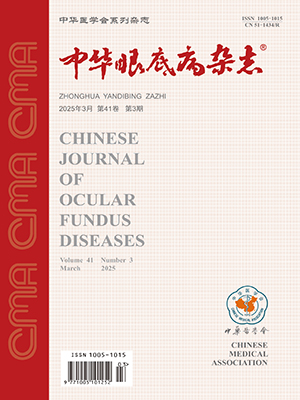Objective lt;br gt;To evaluated the effect of transpupillary thermotherapy (TTT) on age-related macular degeneration (AMD). lt;br gt; lt;br gt;Methods lt;br gt;Sixty-two cases (62 eyes) of exudative AMD were managed with TTT. Before treatment, 58 cases underwent fundus fluorescein angiography(FFA),42 cases underwent simultaneous indocyanine green angiography (ICGA), and 56 cases underwent optic coherence tomography (OCT).TTT was delivered using a 810 nm diode laser with variable spot sizes 0.5-3.0 mm and power range 60-40 mW,60 seconds duration. Sixty-two cases were followed up for 1-10 months with 4.8 months average. lt;br gt; lt;br gt;Results lt;br gt;The visual acuities of last visit were compared with those before the treatment. The visual acuity was unchanged in 43 cases (69.3%), improved in 15 cases (24.2%), and declined in 4 cases (6.5%). OCT was re-done in 51 cases and compared with OCT images before TTT treatment. The height of macular edema was unchanged in 29 cases (56.9%), decreased in 18 cases (35.3%), and increased in 4 cases (7.8%). The amelioration of visual acuity was compatible with that of macular configuration in the majority of cases (74.5%). Only in 13 cases (25.5%) the amelioration of visual acuity lagged behind that of macular configuration. The re-treatment was performed in 18 cases (29.1%), probably due to insufficiency of laser power. No side-effect was found. lt;br gt; lt;br gt;Conclusion lt;br gt;TTT makes most of the cases of exudative AMD retaining or improving their visual acuity. The employment is secured. Further exploration is needed in order to obtain the parameters of the laser treatment. (Chin J Ocul Fundus Dis, 2002, 18: 180-183)
Citation: WANG Guanglu,PENG Xiaoyan. Transpupillary thermotherapy in the management of exudative age-related macular degeneration. Chinese Journal of Ocular Fundus Diseases, 2002, 18(3): 180-183. doi: Copy
Copyright © the editorial department of Chinese Journal of Ocular Fundus Diseases of West China Medical Publisher. All rights reserved




